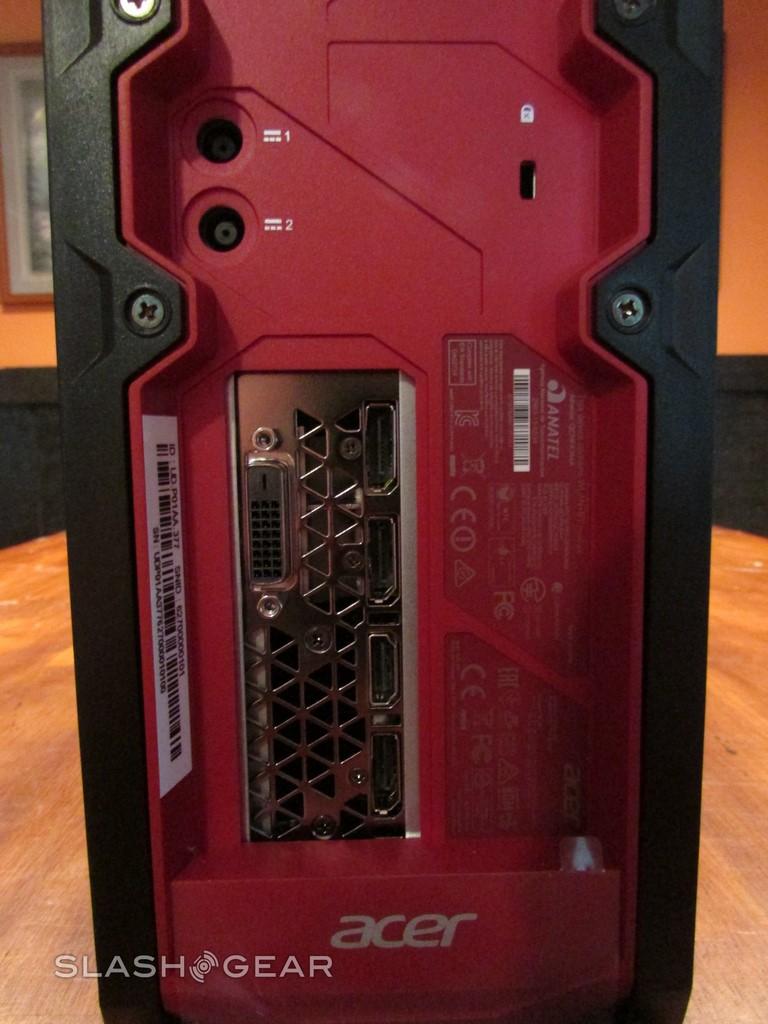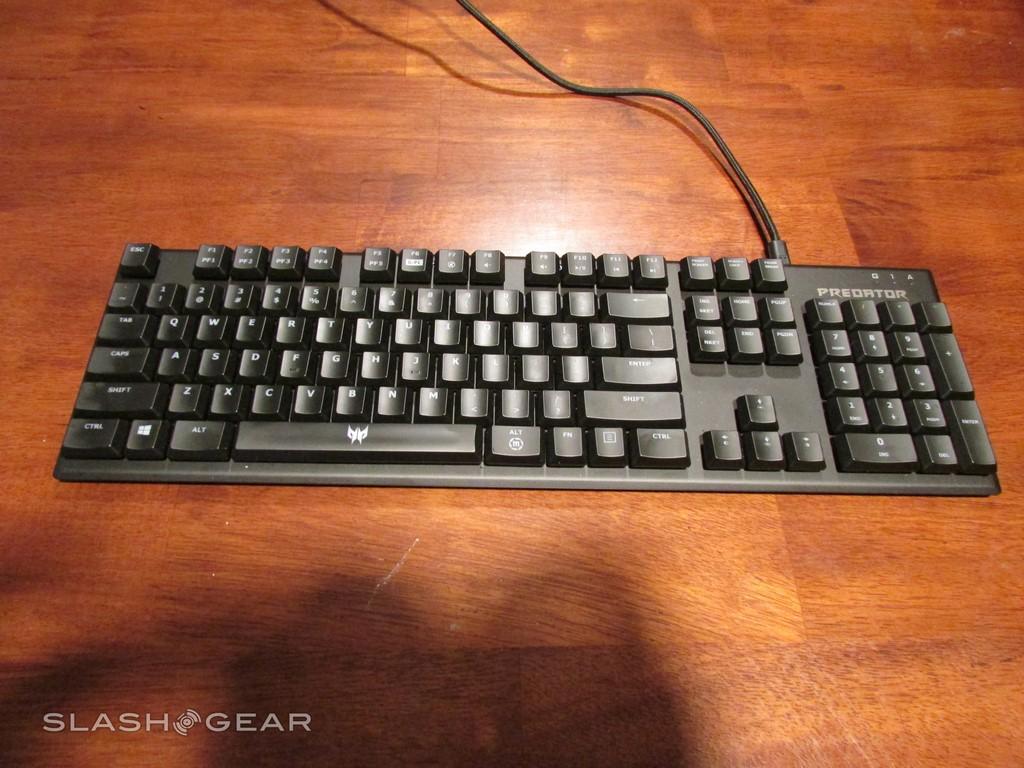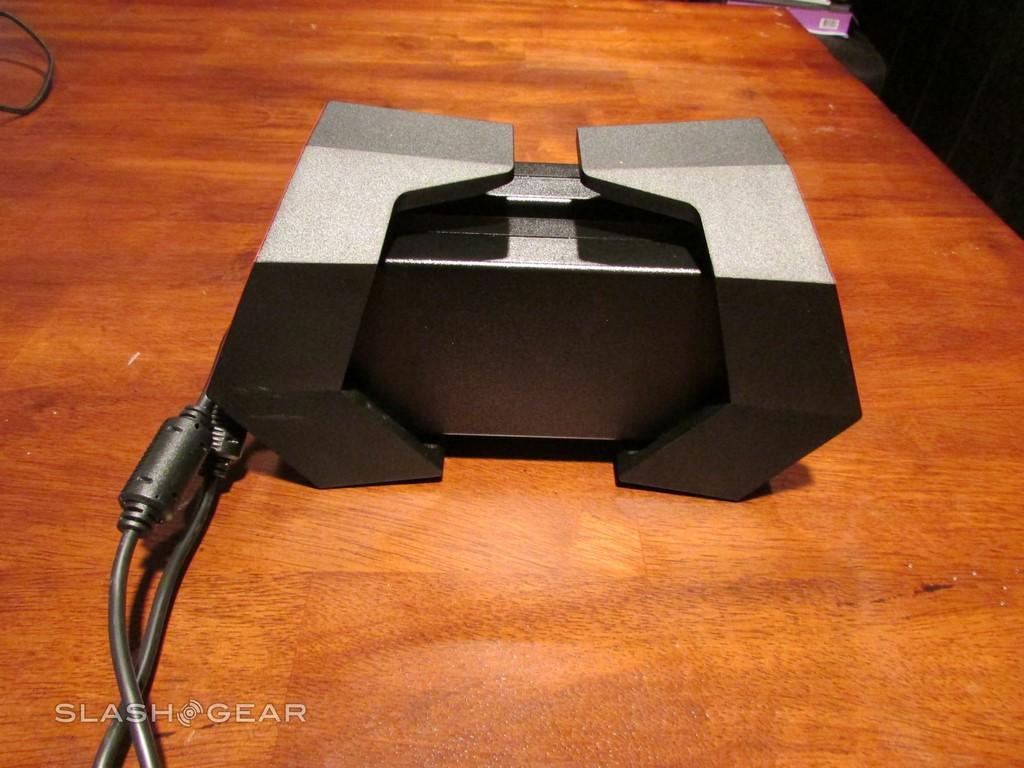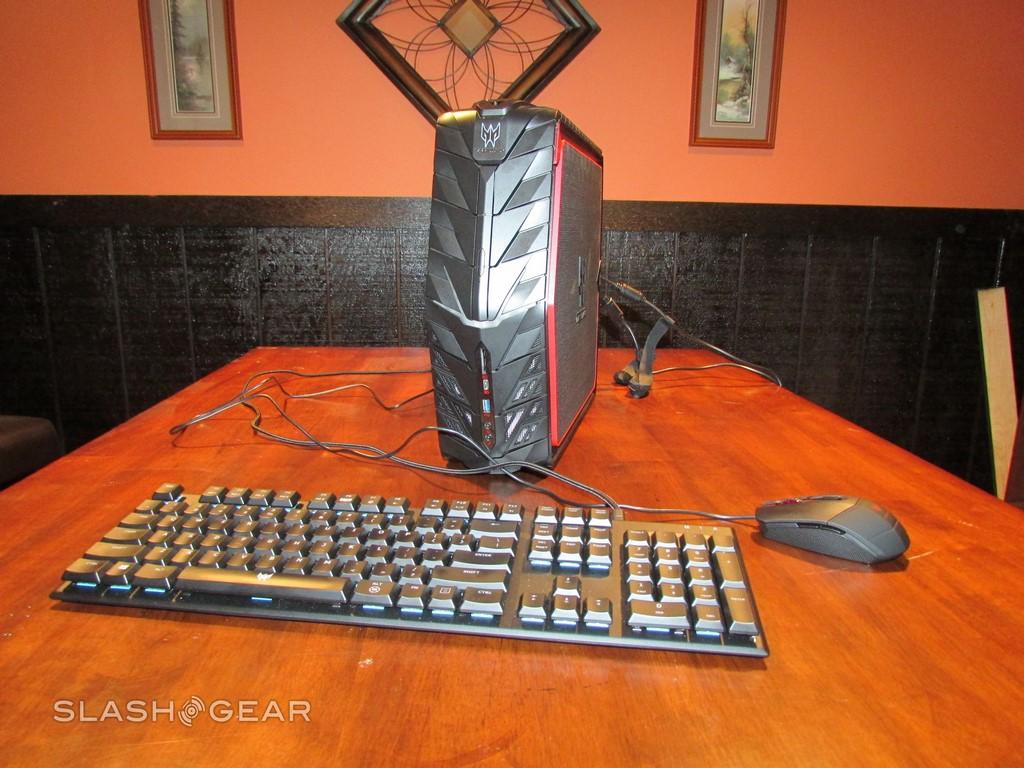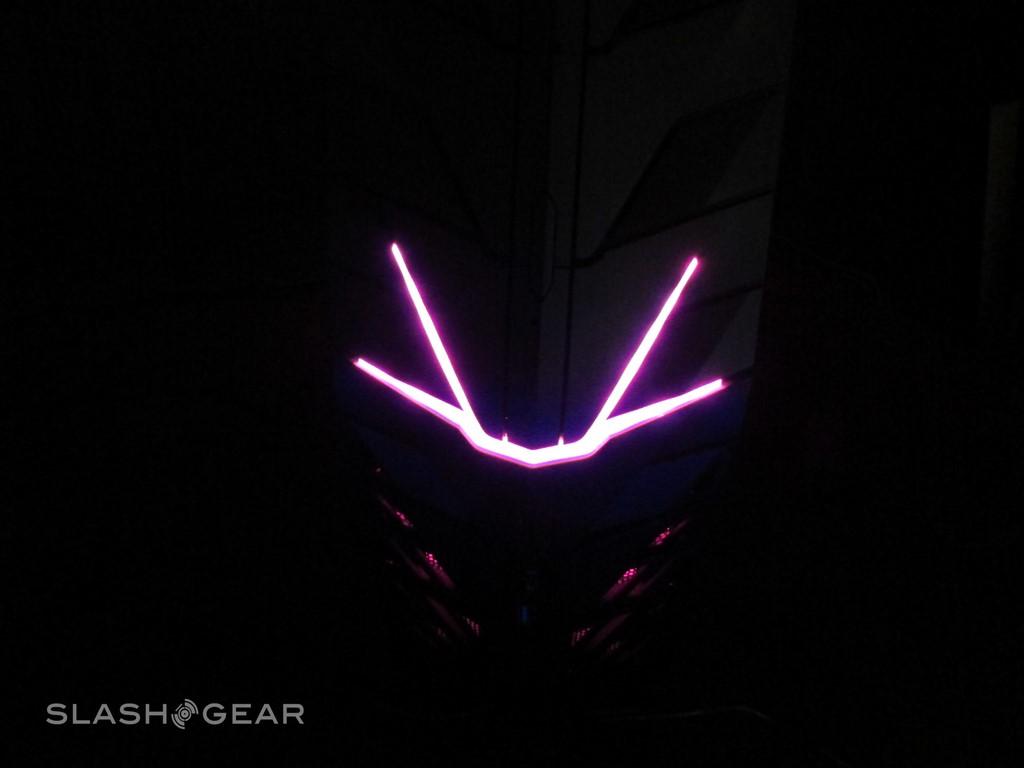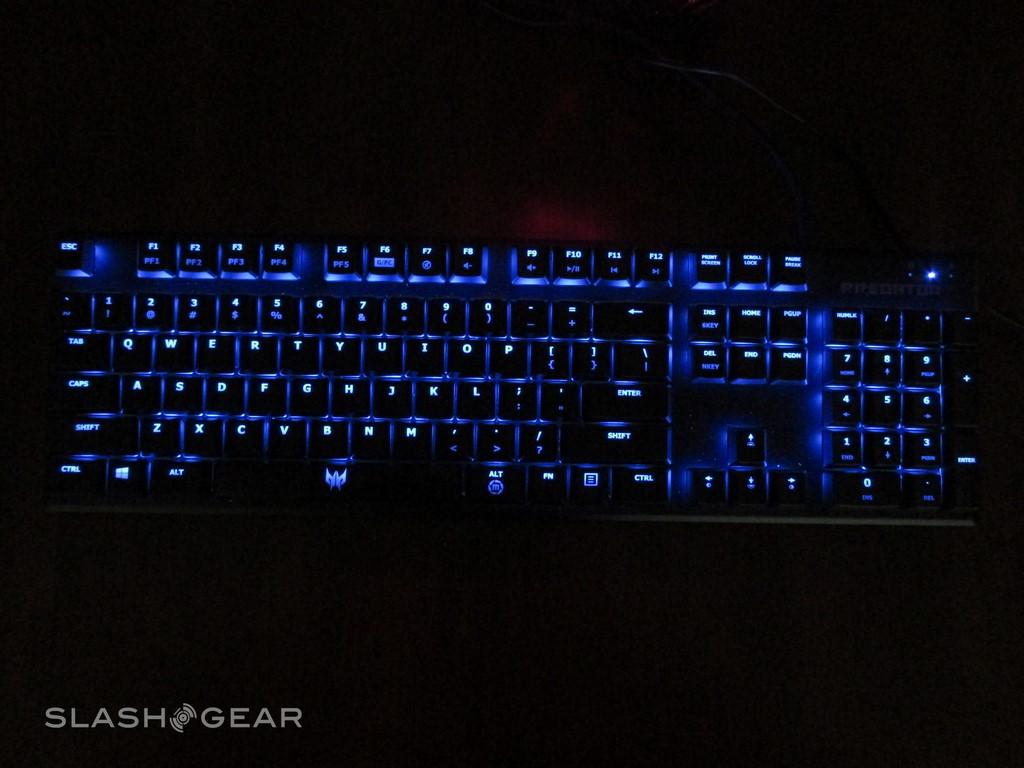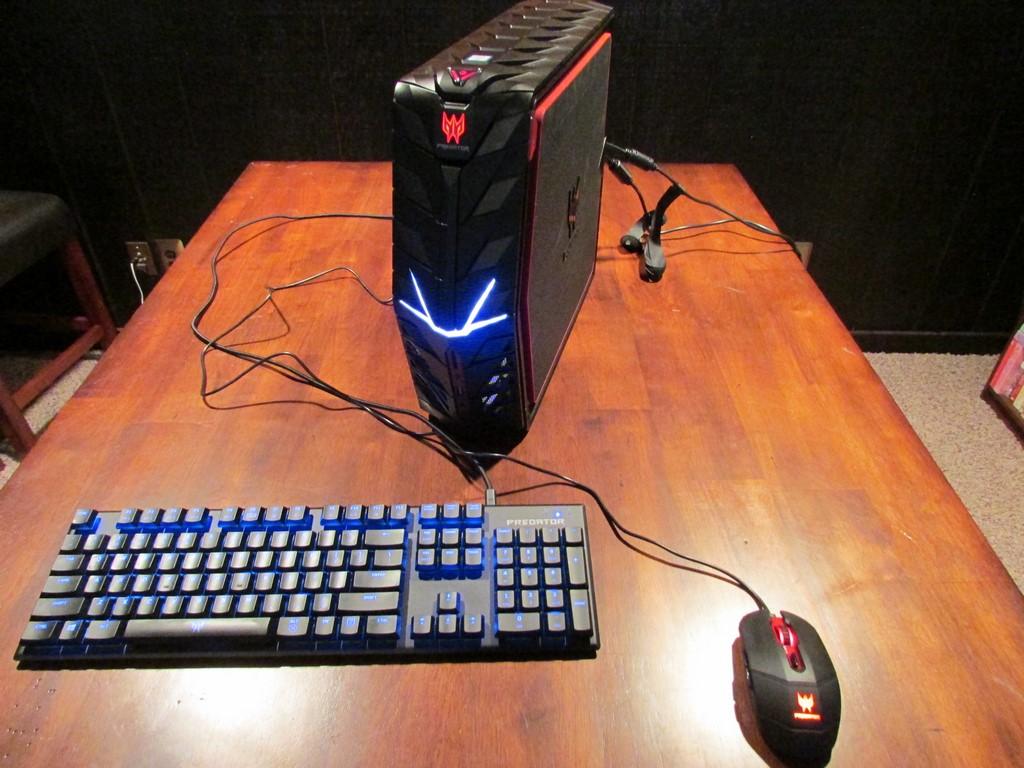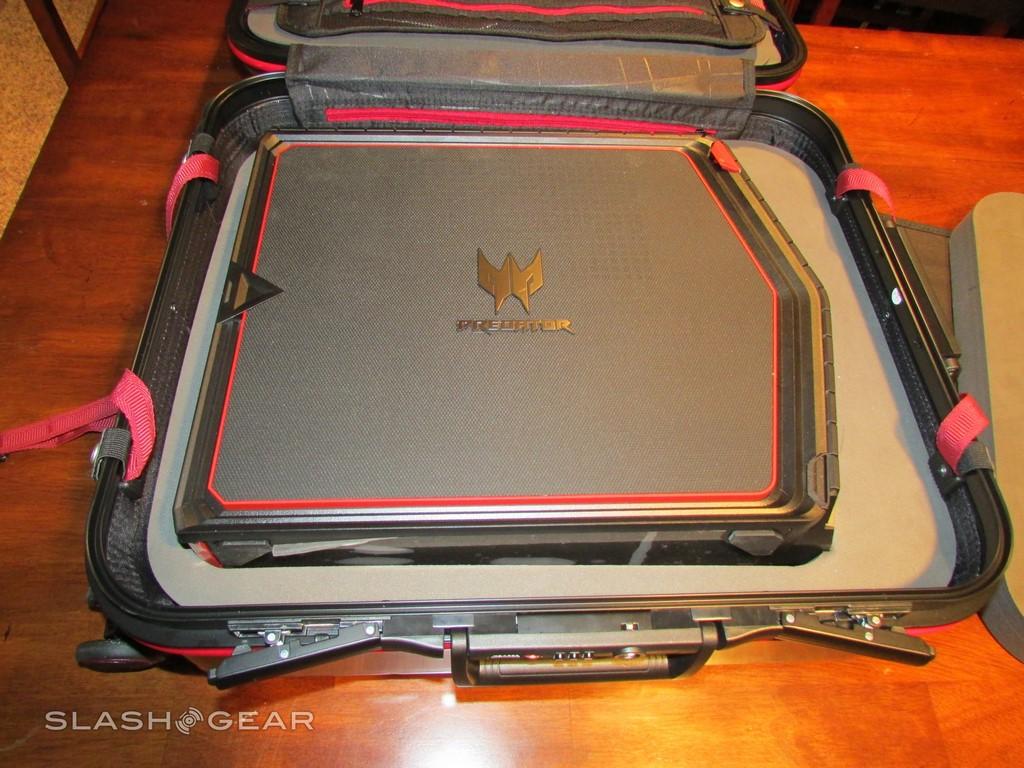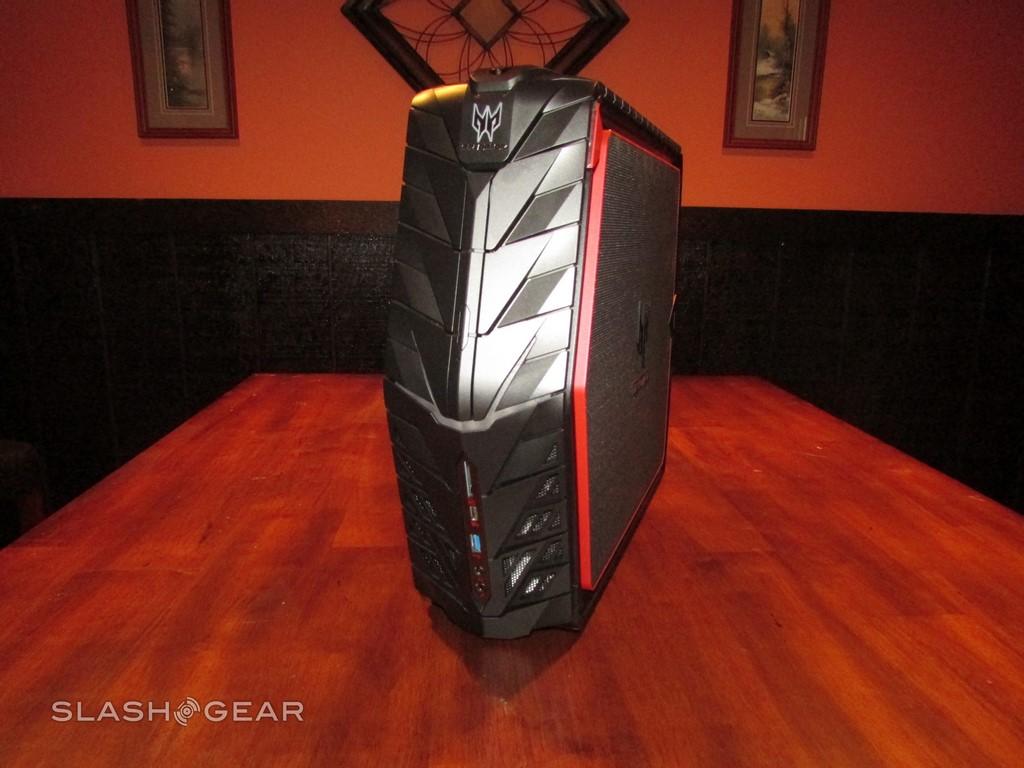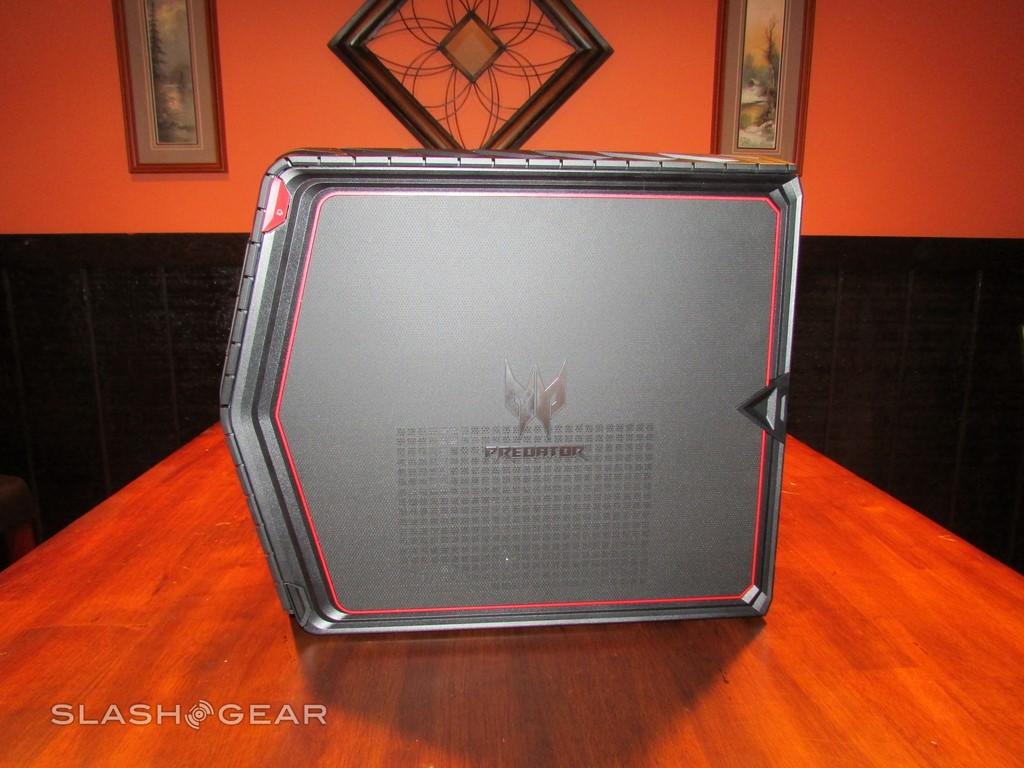Acer Predator G1 Review: A Lot Of Power In A Tiny Package
- Excellent hardware that won't be obsolete for a while
- Extremely small footprint for a gaming desktop
- Sleek exterior - this is a good looking PC
- External power supply opens potential for damage
- Small form factor limits options for expansion
- Unique power supply could make upgrading components difficult
Acer's Predator G1-701-70001 gaming rig is here, arriving after the successful splash the G6 enjoyed. One look at the specification list is all you need to know that this is rig is a beast, but in a world where anyone can throw together top-of-the-line equipment into a formidable gaming PC, what does the G1 have to make it stand out from the crowd? The answer is quite a lot, actually.
Overview
What makes the Predator G1 a unique system is immediately obvious, as this is one small PC. While many manufacturers will offer up their gaming rigs in huge cases as yet another way of catching attention, Acer went the opposite direction with this one, offering up what is definitely the smallest gaming PC I've ever used. The Predator G1 is less than half the size of my personal rig, despite eclipsing it in hardware power.
The G1 achieves this small footprint by thinking outside of the box, both literally and figuratively. In an effort to cut down on overall size, the power supply has been moved outside of the case. Yes – this is a desktop with an external power supply, something that you don't often see in desktops. In fact, even though I know this isn't the first time a manufacturer has offered a desktop PC with an external power supply, it's the first time I've ever encountered one. My feelings toward it, in case you were wondering, are mixed.
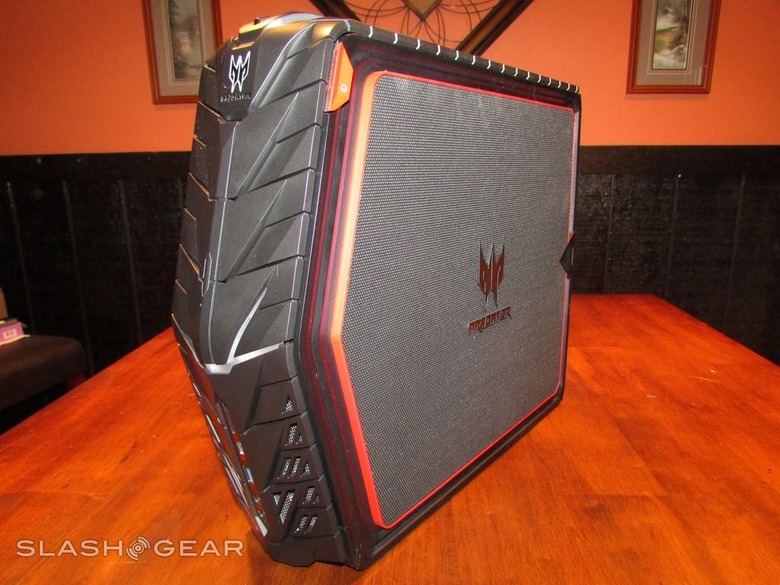
On the one hand, the tiny form factor Acer is offering here is truly impressive. This is the smallest gaming PC that I've encountered by a country mile, though that small footprint feels a little artificial, considering you need to have space for the power supply as well.
Moving the power supply to the outside of the case was done at least partially to market this computer as a semi-portable desktop, perfect for gamers to take with them to LAN parties or when they're otherwise on the move. The problem, though, is that the external power supply is kind of counter-intuitive here, as it forces you to carry around an extra item. Don't get me wrong – the computer itself is light and easy to carry under one arm, but when you have to also bring along an external power supply on top of your keyboard, mouse, and monitor, the size of the computer seems a little less important in the grand scheme.
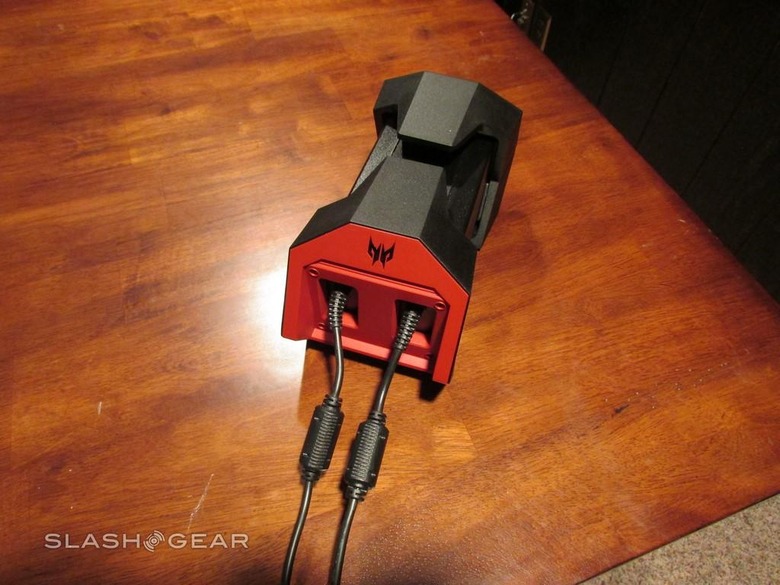
Acer, for its part, seems to recognize this, and is offering a travel suitcase for the Predator G1. For a limited time, an aluminum shell carrying case is included with the purchase of a Predator G1, but it isn't always going to be that way, with the case demanding a $259 price tag on its own.
The case – complete with wheels and an extendable handle – has an outer hard shell and foam inserts that all of the components of the PC fit into rather snugly. Once the components are in place, a set of straps holds everything in securely, and a combination lock on the outside ensures that you're the only one who can open it up and access its expensive contents.
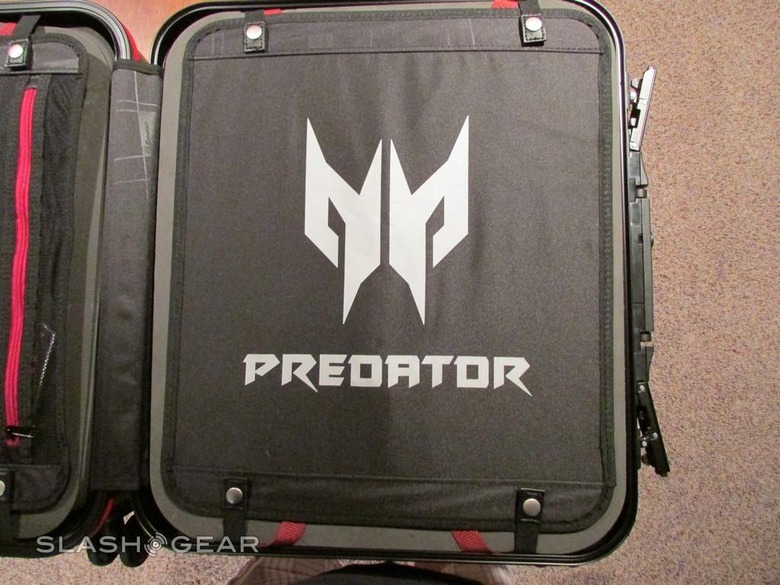
It works fairly well, but getting everything in its place and properly secured takes a bit of time – so much so that I'd almost rather toss the keyboard, mouse, and power supply in a backpack and carry the PC under my arm. As an included item, the case isn't a bad little bonus, but if you miss out on the bundle and have to pay for it separately, I say skip it.
Design
The PC itself looks super sleek – Acer didn't have much to work with in terms of surface area on the case, but it did an excellent job with what it had. Like the G6, the front of the G1 resembles the tread of a tank, and I think its a look that works well here. The front of the PC is adorned with plenty of lights – in addition to the illuminated power button and Predator logo, the front of the case also features a light up V-Badge and a series of highlights that run down the lower half of the front. It's here that you'll also find a panel featuring headphone and microphone jacks, a single USB 3.0 port, an SD card slot, and a USB Type-C port.
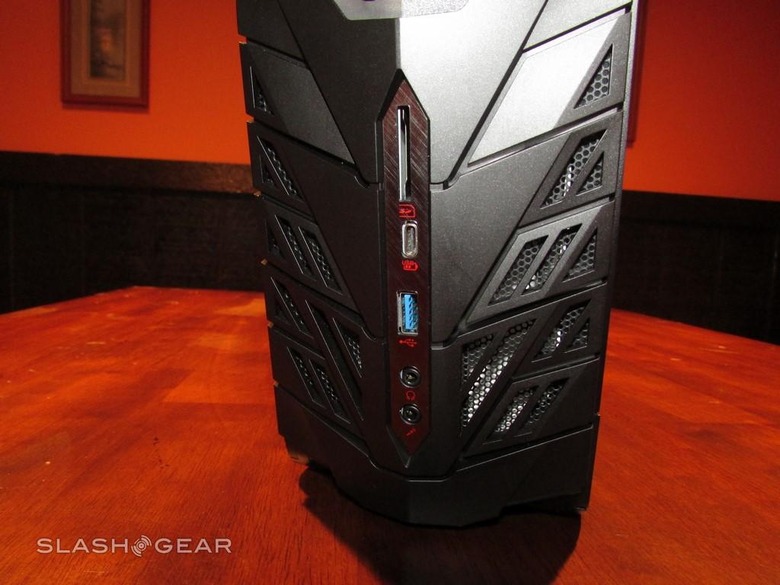
Just above that panel is a vertical optical drive tray, and bookending the Predator logo on either side of the machine are extendable headphone racks, which feel slightly flimsy but get the job done nonetheless.
Around the back you have your set of six standard audio jacks, with four more USB 3.0 ports taking up residence next to the Ethernet jack. Below those are the are the DC jacks for both power cables, and then at the bottom of the machine you have all of the GPU's connections – one HDMI port, three DisplayPort adapters, and one DVI connection.
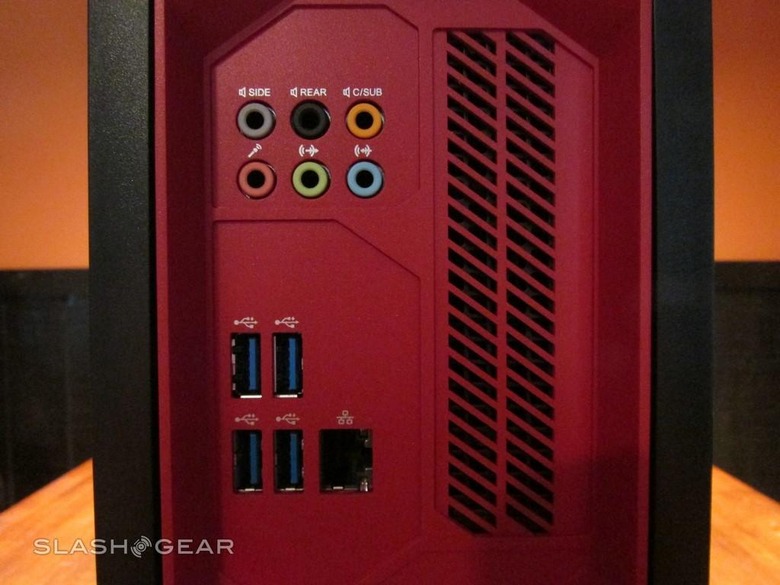
The mechanical Predator keyboard that comes as a pack in is a solid piece of hardware. It feels great to type on and comes with a backlight that makes typing in the dark a piece of cake. The keyboard feels solid, with just enough weight to it to make you feel like it can stand up to some abuse, and the keys give that satisfying clacking sound as you peck away. There's not much to say about the keyboard itself – but then, one doesn't usually need to spend a lot of time explaining something that does its job well.
The Predator mouse that's included in the purchase feels pretty good as well. It may be a little lighter than I prefer my gaming mice to be, but that's really just down to preference. The mouse glows red and includes a total of five buttons – standard left and right mouse buttons, along with two housed on the upper left edge, almost smack dab in the middle of the mouse. The fifth button resides below the scroll wheel, and is used for adjusting the mouse's DPI settings. Clicking the button cycles you through the mouse's three different DPI settings, allowing you to easily change your pointer sensitivity on the fly.
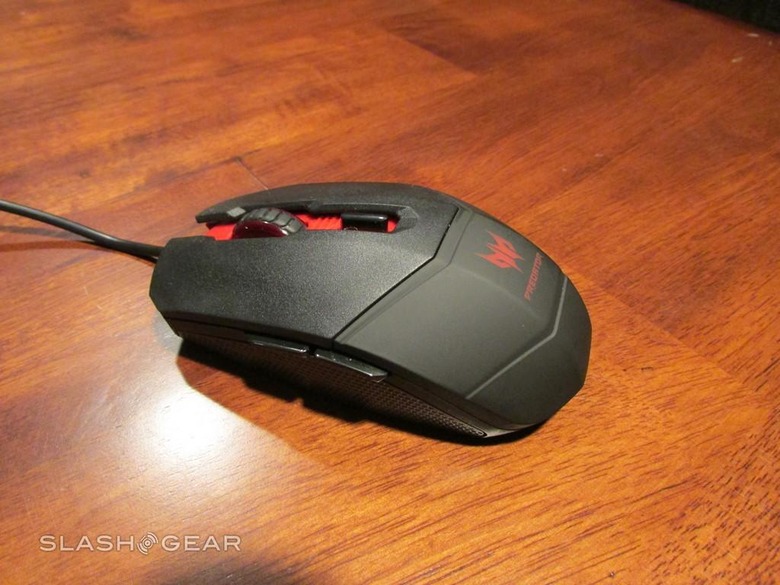
All in all, the mouse is pretty good, but the one complaint I have is that the buttons on the left side of the device almost come out too far – there were a few times I clicked one accidentally, usually activating my browser's back command. It's a minor complaint, however, as most of the time the mouse is easy to use.
Performance
Here's a breakdown of the Predator G1's major hardware:
Intel's 6th Generation Core i7-6700 @ 3.4GHz
NVIDIA GeForce GTX 1080 (8GB GDDR5X VRAM)
32GB DDR4 dual channel 2133MHz RAM
512GB SSD (M.2) with 2TB 7200RPM SATA III HDD
As far as hardware goes, this PC pretty much has it all. We're nearing the top of the list when it comes to NVIDIA's current GTX line up, and with a Core i7-6700 and 32GB of RAM, you're packing a lot of power here.
It shouldn't come as much of a surprise, then, that games run particularly well on this machine. The main game I used for testing is The Witcher 3: Wild Hunt, a game known to be demanding on graphics hardware, especially if you activate NVIDIA's Hairworks option.
Cranking every setting up to maximum – this includes HBAO+ ambient occlusion, 8x Hairworks AA, and settings like shadow, texture, and water quality set to Ultra – I saw gameplay performance that usually bounced between 70 and 85 frames per second at 1080p resolution. Framerate would rarely drop below 70 during segments with complex lighting and a lot of on-screen items to render (but never below 65), and could climb into the low 100s during character close-ups or gameplay in indoor environments. That's not bad at all when you consider the significant performance hit Hairworks had on even top-of-the-line graphics cards when The Witcher 3 was released.
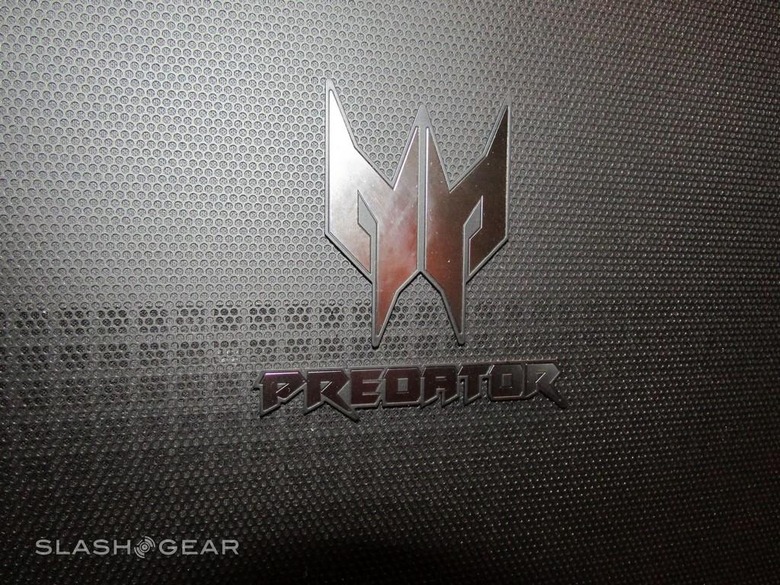
Turning Hairworks off and leaving everything else the same makes things even better, with frame rates never dropping below 80 and more often settling in the 95-105 range. Framerate went as high as the mid-130s during conversation segments where the camera would be up close on a character's face, while it dipped back down to the low 80s during ourdoor scenes with a lot of shadows, complex lighting, and characters on-screen.
Moving over to Middle Earth: Shadows of Mordor (complete with its HD textures pack that comes with a recommendation of 6GB of VRAM), we get a clearer picture of performance thanks to the game's built in benchmarking tools.
Cranking all of the available settings up to their highest level, which includes Camera + Object Blur, texture and shadow quality at Ultra, Ambient Occlusion at High, and lighting quality at high, we see an average FPS of 142.65 at 1080p. The maximum FPS we see during the benchmark test is 236.34, while the minimum is 76.68. That's certainly nothing to stick your nose up at.
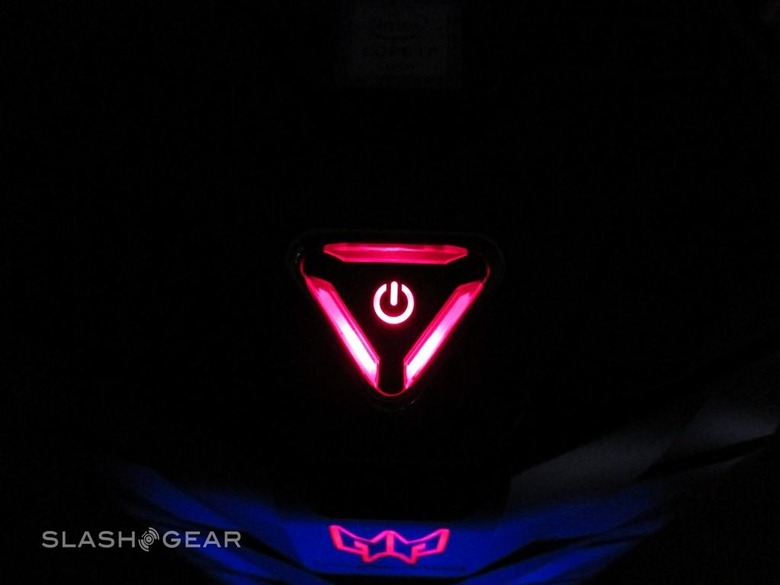
Given the PC's small build and its cramped insides, I was worried that cooling was going to be an issue, but that doesn't appear to be the case. CPU temperatures never even got close to worrisome ranges, even when the computer was under heavy load. You can certainly hear the fans running when the PC has to work to keep things cool, but they were never obtrusively loud. Those who want a whisper quiet PC aren't going to find it in the Predator G1, but if you don't mind the occasional hum of a working fan, you won't have any problems with this rig.
The 32GB of RAM working in conjunction with the 512GB SSD keep things super snappy, and having that much RAM at your disposal means you won't have to worry about upgrading for some time. Having 512GB of storage on the SSD is nice, as it means you'll have a fair amount of space to store games that would otherwise suffer from long loading times (looking at you, open world RPGs), and having 2TB of additional HDD space serves of the cherry on top of this storage sundae.
Wrap-Up
Clearly, the Predator G1 is a capable gaming rig. We knew it was going to be one going in, so it isn't shocking to see games like The Witcher 3 and Shadow of Mordor run beautifully on the system.
I appreciate what Acer is trying to do with the design, but when you take everything into account, it doesn't seem to be worth moving the power supply outside of the case. LAN parties are few and far between these days, meaning gamers have less of a reason to ever take their PC on the go with them. Just as well, that small size is going to limit your options in terms of expansion – the computer only has one extra HDD/SSD bay, so for everything else, you're going to be replacing instead of adding on.
I like the smaller overall footprint of the computer, and I'm truly astounded that Acer managed to fit all this hardware into such a small package, but the fact remains that any time you move hardware outside of the case, you open yourself up to the potential for damage. The power supply seems fairly sturdy, but all it takes is one mistake and you're out one crucial component. Even with a conscious effort to be careful, I'm having a hard time shaking the hesitations I have about any external component on a desktop PC.
The unique nature of the power supply brings up the question of what a G1 owner will do if they want to upgrade to components that require more power sometime down the road. Since this external power supply was made specifically for the G1, upgrading to more power-hungry components could prove to be difficult, if not impossible.
I'm also not so sure on the price – at $2,299, this costs a decent chunk of change, but I can admit that I'm almost certainly biased because I've long been a proponent of the do-it-yourself approach when it comes to PC gaming. When someone asks me what kind of gaming PC they should buy, my answer will invariably be "build one yourself," though I recognize that's not what some people can or want to do.
So, if you don't have the desire to build your own and you have the money to spend, the Acer Predator G1 isn't going to let you down as far as its gaming capabilities are concerned. The recommendation comes easier if you don't have a ton of space or if you're one of the few who still regularly attend LAN parties, but for everyone else, you'll have to weigh the PC's excellent performance and design against whether or not you can live with an external power supply and the risk that comes along with it.


